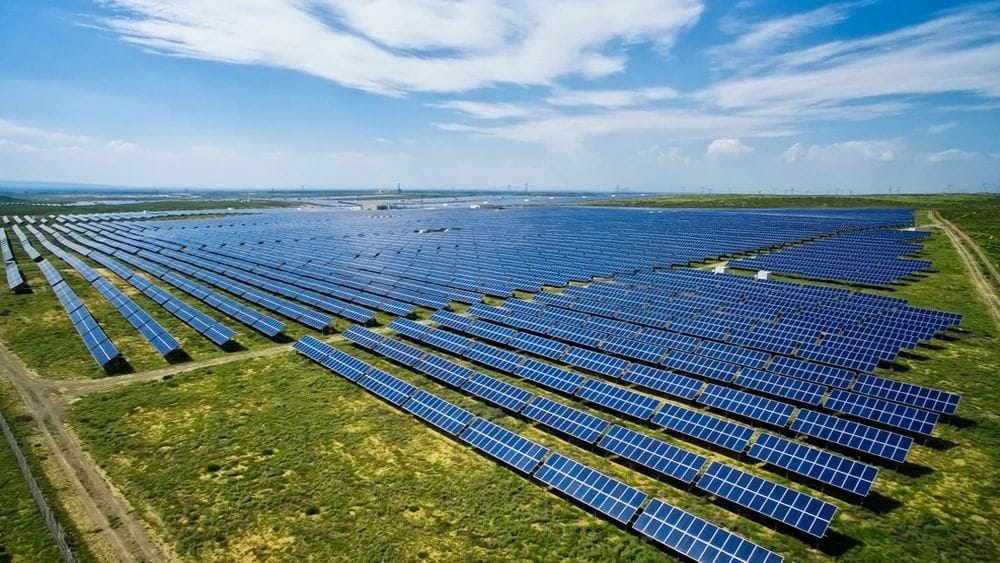With a call, industry leaders have taken practical actions to promote the stabilization of photovoltaic module prices.
After the surging photovoltaic industry, in 2024, it experienced unhealthy ecology such as overcapacity and vicious competition. With the strong support of industry self-discipline and policies, it has regained its development focus. The most typical example is the photovoltaic module link. Recently, this war without gunpowder has once again reached a critical node. Industry leaders have taken the lead in opposing internal strife, raising expectations for module prices, and stabilizing module prices, releasing key signals with practical actions.
Phenomenon: Strong expectations for price increases
After the sixteen photovoltaic leaders held an anti-involution meeting on October 18, the price of photovoltaic modules, which had been bottoming out all the way, finally ushered in a turning point. First, the industry regulations were implemented to “establish rules and regulations”, and the China Photovoltaic Industry Association clearly pointed out that bidding below cost was suspected of being illegal. Subsequently, central state-owned enterprises took the lead in large-scale frame procurement and centralized procurement, and repeatedly released positive signals of rising module prices.
At the end of October, China Energy Conservation’s 2024 photovoltaic module framework agreement procurement bids were opened, with obvious signs of recovery. The quotations of 13 participating companies ranged from 0.675 to 0.722 yuan/W, with an average price of 0.694 yuan/W. At the initiative of the industry association, this bid opening successfully fired the first shot to stop the decline of components.
In November, the “relay race” of component prices became more and more stable. In the recent two bid opening results, the average quotation of 29 companies participating in the bidding for the first batch of crystalline silicon photovoltaic module framework bidding projects in 2024 of China Southern Power Grid Energy reached 0.691 yuan/W. The average price of TOPCon and the average price of P-type in the first batch of photovoltaic module long-term centralized procurement projects in 2024 of China Coal was 0.755 yuan/W.
In addition to the stabilization of the winning bid price, the policy combination punch has not stopped. On November 15, the Ministry of Finance and the State Administration of Taxation issued an announcement, announcing that from December 1, 2024, the export tax rebate rate for some refined oil, photovoltaics, batteries, and some non-metallic mineral products will be reduced from 13% to 9%. The reduction in the export tax rebate rate will increase the export cost of photovoltaic companies and avoid excessive price declines of photovoltaic products.
With the industry’s increasingly resolute attitude against internal circulation and the joint promotion of favorable industry policies such as export tax rebate adjustments, it is expected that the price of photovoltaic modules will further reverse in December.
Enterprises: Who will stay at the “table”
After this round of adjustment of photovoltaic module prices, which companies can continue to be the “number one player” is undoubtedly one of the most concerned issues after the end of the industry’s clearance.
In the past four years, the competitive landscape of domestic photovoltaic module leading companies has been relatively stable. In the shipment ranking list, except for some new strong players, the main share is still firmly held by old photovoltaic module manufacturers such as JinkoSolar, Trina Solar, Longi Green Energy, JA Solar, and Canadian Solar. These five companies occupy more than 60% of the market. Among them, JinkoSolar’s shipments in the third quarter of 2024 reached 23.7GW, firmly sitting in the top spot, and Trina Solar’s module shipments ranked in the top 5 in the world for 14 consecutive years.
After this benign industry adjustment, it is expected to further strengthen the Matthew effect, clear out companies with insufficient comprehensive competitiveness, and be more conducive to the leading module companies to improve the industry concentration.
On the one hand, the competition for technology routes among leading companies is expected to become more intense in 2025. At present, leading companies such as JinkoSolar, JA Solar, Trina Solar, and Canadian Solar have chosen TOPCon batteries as their core technology route, while the main participants in the BC technology route are Longi Green Energy and Aiko Solar. Longi Green Energy has launched centralized Hi-MO 9 modules and distributed Hi-MO X10 module products. Aiko Solar publicly stated that the BC module shipment plan for 2025 is more than 20GW.
And judging from the recent bid prices, BC components have shown a certain premium advantage. According to CITIC Securities’ research report data, the premium of BC components over TOPCon components is between 0.07 yuan/W and 0.18 yuan/W.
On the other hand, the cessation of vicious competition in photovoltaic components is conducive to accelerating the elimination of backward production capacity. In the past two years, a large number of speculative companies have poured into the photovoltaic component segment. Under the great waves, many once crazy cross-border players have been defeated in photovoltaics.
In early November, Zhengye Technology, which entered the photovoltaic industry in 2022, issued an announcement announcing the termination of the annual production of 5GW photovoltaic components and 8GW heterojunction battery cell projects, and stated that it would prepare to divest photovoltaic assets and put the focus back on the main business. There are no more such “losers”. When photovoltaics are “highlight”, they choose cross-border photovoltaic components in large numbers. When the industry is cleared, they are also the first to be shuffled out.
Conclusion
Every industry will inevitably go through a difficult adjustment period. When the momentum is high, it is rare for the authorities to remain calm and objective, not inward-looking or blindly following others. At a time when the photovoltaic industry is facing losses across the entire industry chain, maintaining confidence in the future is the first step to get out of the fog.

